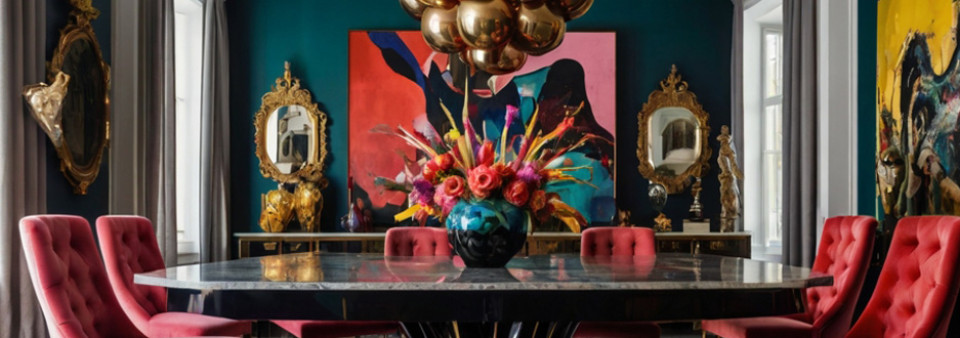ICONIC DESIGNS and INSPIRATIONAL INTERIORS
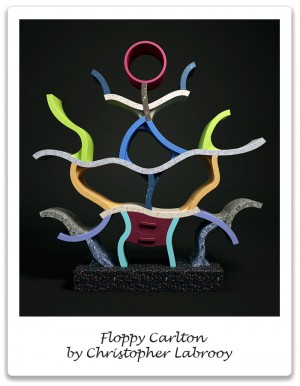 Ettore Sottsass Jr. , a member of the influential designer group Memphis, created and presented the Carlton room divider in 1981. It was one of the most memorable items of that Memphis presentation. The nonconformist design of geometrical shapes, African totemic influences, bright but carefully selected colours was typical for the symbolism combined with bold consumerism.
Ettore Sottsass Jr. , a member of the influential designer group Memphis, created and presented the Carlton room divider in 1981. It was one of the most memorable items of that Memphis presentation. The nonconformist design of geometrical shapes, African totemic influences, bright but carefully selected colours was typical for the symbolism combined with bold consumerism.
 Frank Gehry was commissioned by the Bilbao (Basque Country, Spain) local government to design a Guggenheim museum. The idea was approved by the Solomon R. Guggenheim Foundation. The museum was completed in 1997. Dynamic forms of the building, both externally and internally, require innovative design tools, such as custom-programmed CAD software. They also need to be built from innovative materials, such as titanium, that would allow the flow of the form.
Frank Gehry was commissioned by the Bilbao (Basque Country, Spain) local government to design a Guggenheim museum. The idea was approved by the Solomon R. Guggenheim Foundation. The museum was completed in 1997. Dynamic forms of the building, both externally and internally, require innovative design tools, such as custom-programmed CAD software. They also need to be built from innovative materials, such as titanium, that would allow the flow of the form.
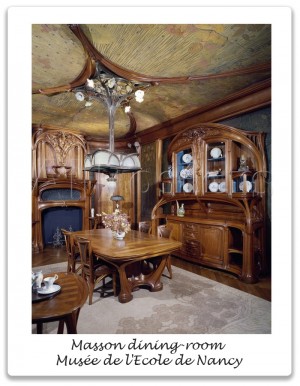 This dresser was designed and produced by by Eugene Vallin together with Victor Prouvé as part of a complete room for commissioned for Mr Masson, Musée de l’Ecole de Nancy in France (1903-1906). The Ecole de Nancy Museum is entirely dedicated to the Nancy Art Nouveau movement. This room, and hence the dresser, are iconic representations of the movement.
This dresser was designed and produced by by Eugene Vallin together with Victor Prouvé as part of a complete room for commissioned for Mr Masson, Musée de l’Ecole de Nancy in France (1903-1906). The Ecole de Nancy Museum is entirely dedicated to the Nancy Art Nouveau movement. This room, and hence the dresser, are iconic representations of the movement.
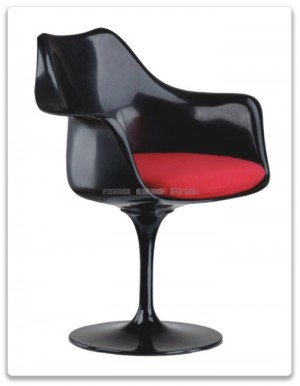 Eero Saarinen designed the Tulip Armchair in 1955-56 for the Knoll company in the USA. It was part of a series of Tulip chairs, with arms. The other designs had no arms. There are also completely upholstered versions of the Tulip chairs and armchairs. Saarinen also designed a matching circular table, also on one pedestal leg. The idea was for the Tulip chairs and table to be used together, to get rid of the visual clutter of the many legs.
Eero Saarinen designed the Tulip Armchair in 1955-56 for the Knoll company in the USA. It was part of a series of Tulip chairs, with arms. The other designs had no arms. There are also completely upholstered versions of the Tulip chairs and armchairs. Saarinen also designed a matching circular table, also on one pedestal leg. The idea was for the Tulip chairs and table to be used together, to get rid of the visual clutter of the many legs.
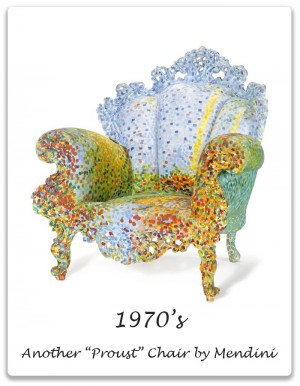 Poltrona di Proust, or the “Proust” Chair was designed in 1978 by an Italian designer, journalist, and teacher Alessandro Mendini. He believed that art, architecture, philosophy and literature influence each other. The project began a couple of years earlier, when Mendini was designing a textile pattern for Cassina inspired by French writer Marcel Proust. It was then that he came across a chair in the neo-baroque style of 18th century France that gave its shape to the “Proust” chair.
Poltrona di Proust, or the “Proust” Chair was designed in 1978 by an Italian designer, journalist, and teacher Alessandro Mendini. He believed that art, architecture, philosophy and literature influence each other. The project began a couple of years earlier, when Mendini was designing a textile pattern for Cassina inspired by French writer Marcel Proust. It was then that he came across a chair in the neo-baroque style of 18th century France that gave its shape to the “Proust” chair.
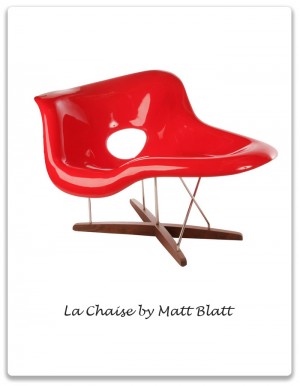 La Chaise is a lounge chair that Charles and Ray Eames designed in 1948 for The Museum of Modern Art’s “International Competition for Low-Cost Furniture Design” in New York. The La Chaise was never manufactured commercially during the lives of the Eames’. It was only in 1996 that Vitra International, a company that in the past partnered with the Eames, began producing The La Chaise commercially.
La Chaise is a lounge chair that Charles and Ray Eames designed in 1948 for The Museum of Modern Art’s “International Competition for Low-Cost Furniture Design” in New York. The La Chaise was never manufactured commercially during the lives of the Eames’. It was only in 1996 that Vitra International, a company that in the past partnered with the Eames, began producing The La Chaise commercially.
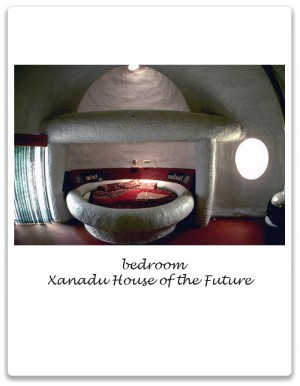 Xanadu were a series of houses built in the USA in the 1980’s to showcase the experimental technologies and home automation solutions, ergonomics, usability, and energy efficiency. House automation was managed by a system of Commodore computers. Xanadu House of the Future in Kissimmee, Florida was opened to the public viewing in 1983.
Xanadu were a series of houses built in the USA in the 1980’s to showcase the experimental technologies and home automation solutions, ergonomics, usability, and energy efficiency. House automation was managed by a system of Commodore computers. Xanadu House of the Future in Kissimmee, Florida was opened to the public viewing in 1983.
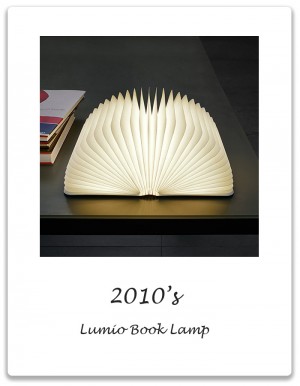 Lumio Book Lamp was designed in 2013 by Max Gunawan. In many ways it is an outstanding piece of lighting. It is elegant, portable, flexible, hard-wearing and affordable. When closed, it looks like a book with wooden covers. When open, it looks like a book and the light switches on.
Lumio Book Lamp was designed in 2013 by Max Gunawan. In many ways it is an outstanding piece of lighting. It is elegant, portable, flexible, hard-wearing and affordable. When closed, it looks like a book with wooden covers. When open, it looks like a book and the light switches on.
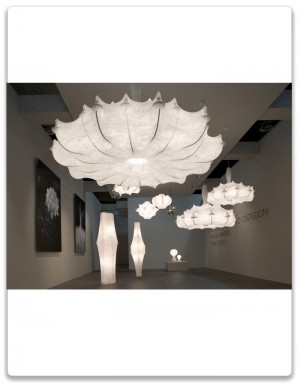 Marcel Wanders designed this most impressive chandelier in 2005, inspired by one of his masters, Achille Castiglioni’s and his cocoon lamp. Zeppelin emanates grand luxury and modern sophistication. Due to its large size it needs interiors of adequate scale and space. It looks great in grand foyers, art galleries, luxury restaurants and department stores, reception rooms and large residential living/dining areas.
Marcel Wanders designed this most impressive chandelier in 2005, inspired by one of his masters, Achille Castiglioni’s and his cocoon lamp. Zeppelin emanates grand luxury and modern sophistication. Due to its large size it needs interiors of adequate scale and space. It looks great in grand foyers, art galleries, luxury restaurants and department stores, reception rooms and large residential living/dining areas.

